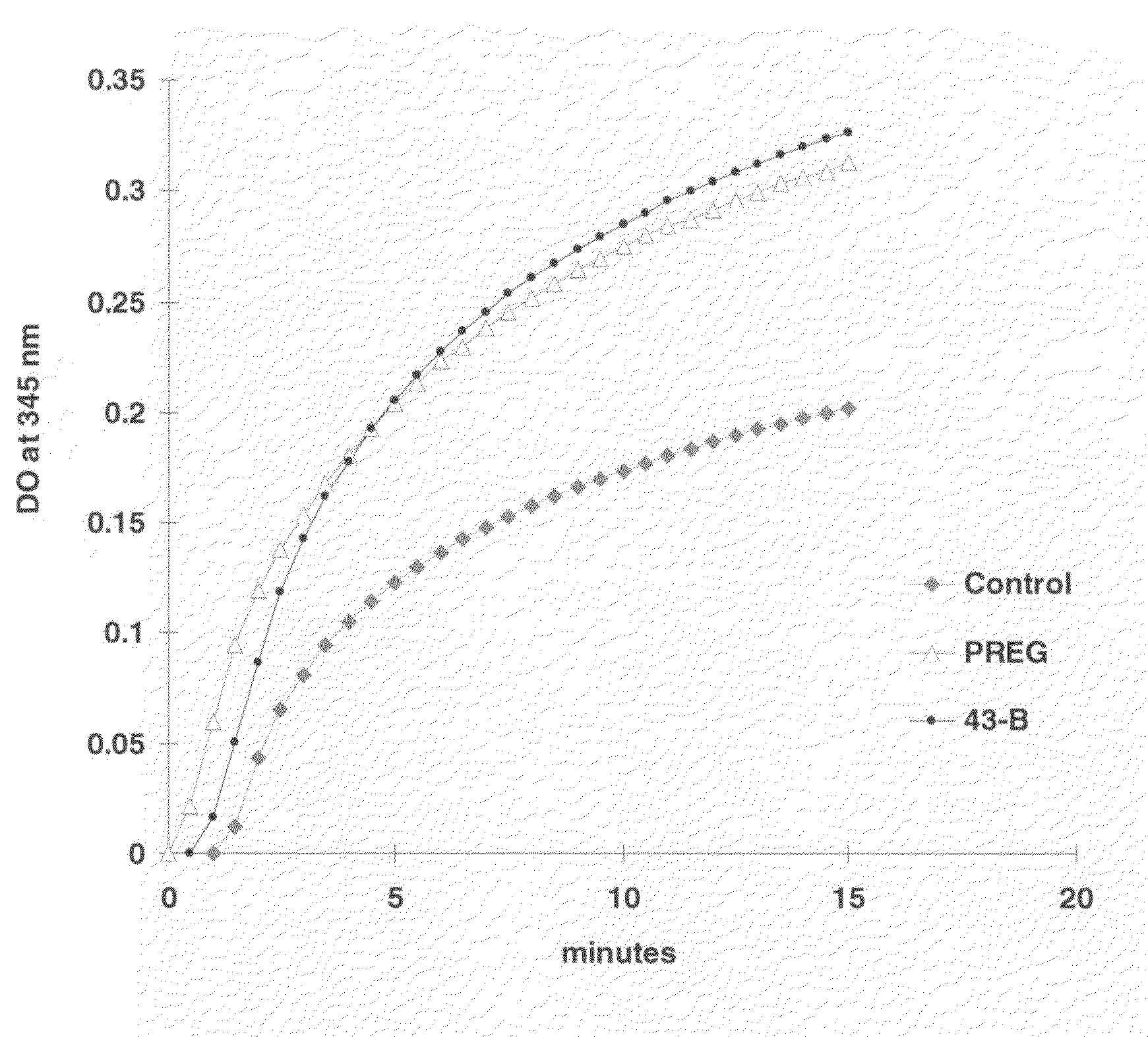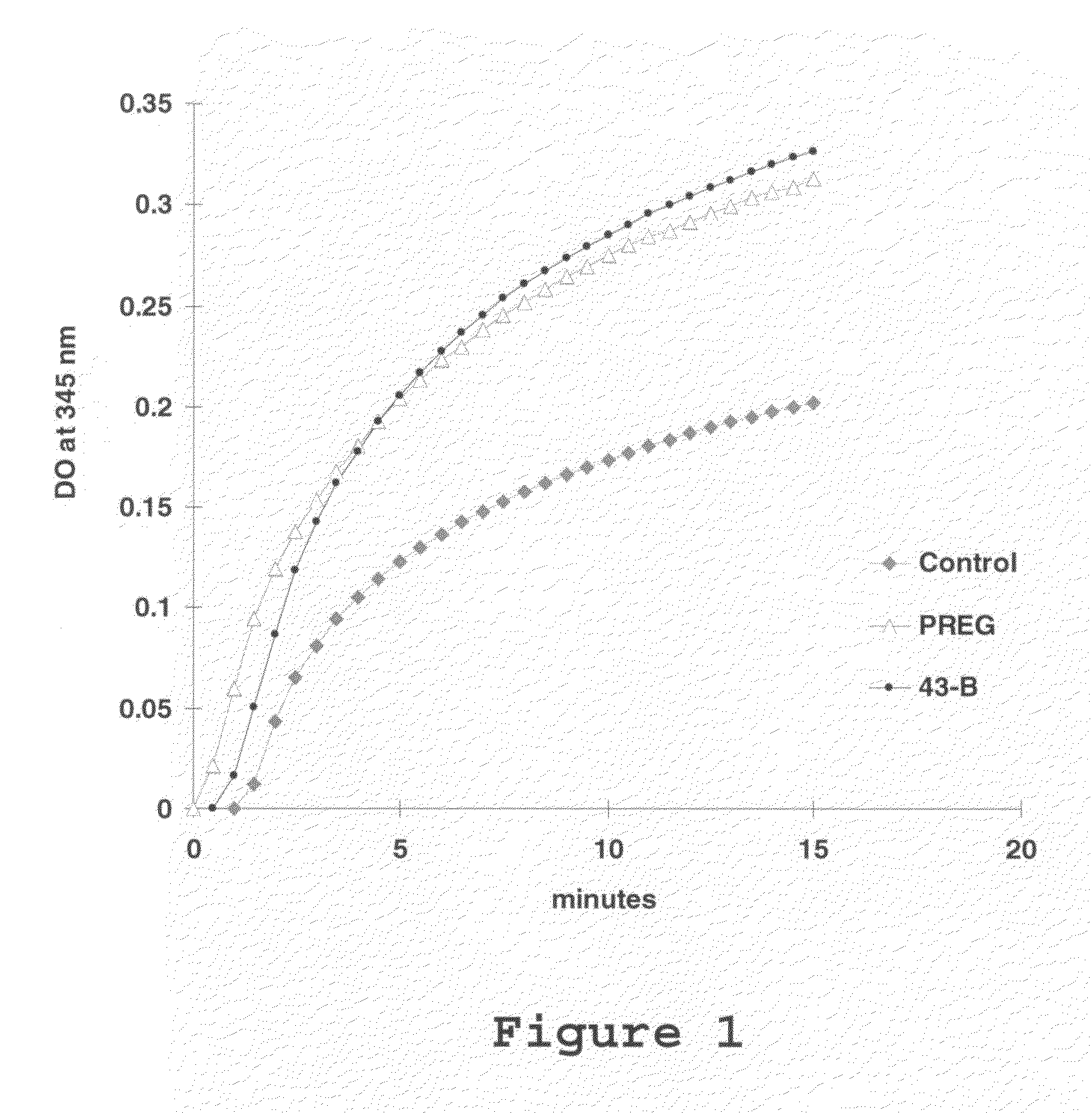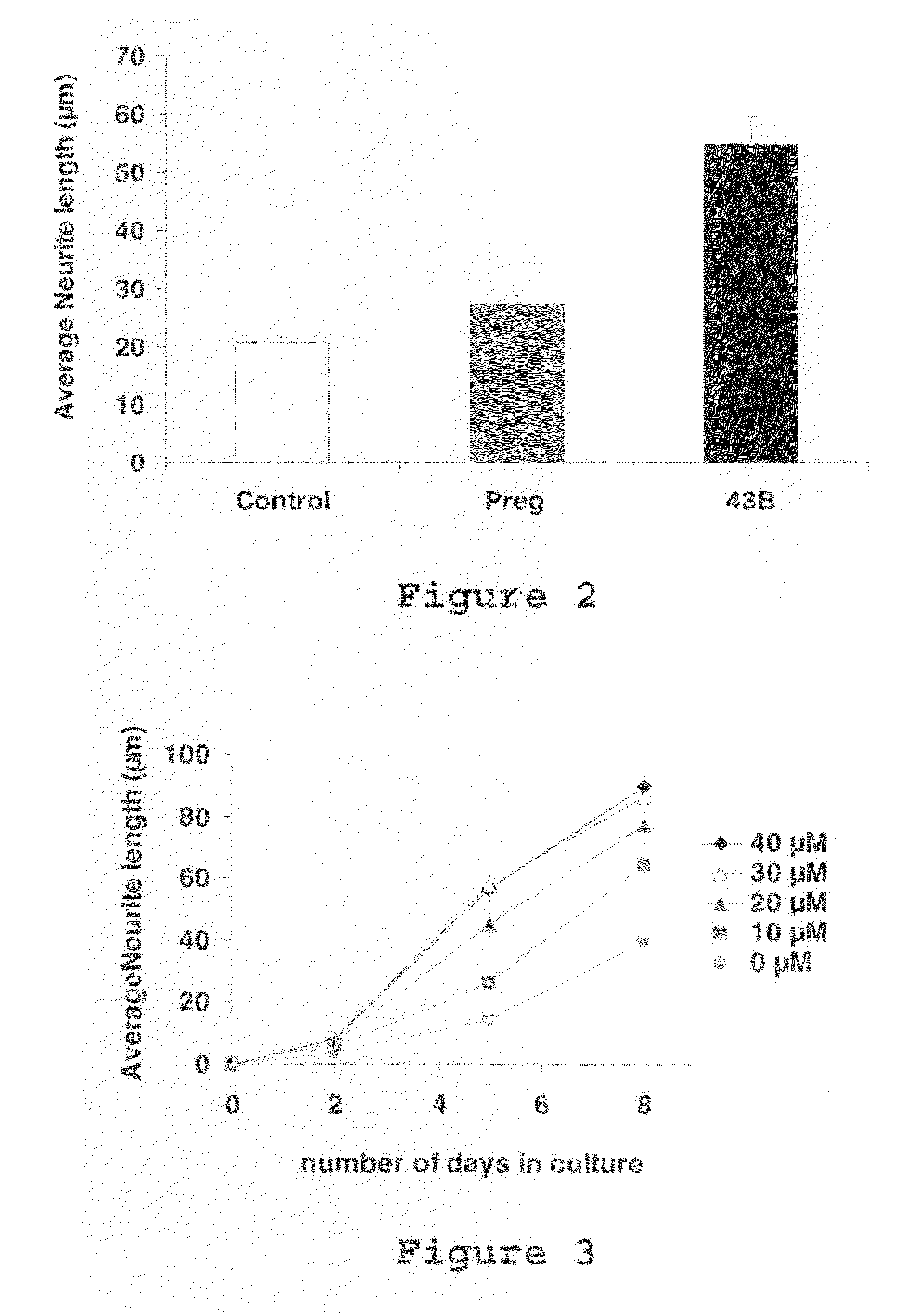Use of 3-methoxy-pregnenolone for the preparation of a drug for treating depressive disorders and long-term neurological diseases
a technology of neurodegenerative diseases and pregnenolone, which is applied in the field of neurodegenerative diseases, can solve the problems of insufficient synthesis of map2 proteins to induce the growth of dendrites, unavailability of effective molecules for neurodegenerative diseases and cns lesions, and devastating effects on the life of patients and their close relatives, so as to achieve easy synthesizing, decrease cell death, and increase the stability of microtubules
- Summary
- Abstract
- Description
- Claims
- Application Information
AI Technical Summary
Benefits of technology
Problems solved by technology
Method used
Image
Examples
example 1
Synthesis of 3-methoxy-PREG (43B)
[0105]10 g (52 mmol) of p-toluenesulfonyl chloride is added to a solution of 5 g (15.8 mmol) of pregnenolone in 30 ml of pyridine. The mixture is stirred for 14 hours and then added to 100 ml of distilled water. After cooling the reaction medium to 0° C., the mixture is filtered and the white solid obtained is dried under vacuum to yield 7.4 g (98%) of pregnenolone tosylate.
[0106]The 7.4 g of pregnenolone tosylate is refluxed with methanol (50 ml) for 4 hours. After cooling and evaporation of the solvent, the crude reaction product is taken up in 100 ml of ethyl and washed 3 times with 100 ml of a 10% sodium bicarbonate solution. After drying the organic phase over Na2SO4, it is evaporated dry under reduced pressure to yield 5.2 g (100%) of 3-methoxy-PREG in the form of a white powder.
[0107]A novel synthesis of 3-methoxy-PREG was performed on a kilogram scale. The purity of the end product was confirmed by NMR and was greater than 97.5%, with only on...
example 2
Test of 3-methoxy-PREG (43B) Activity; Comparison with Pregnenolone (PREG)
[0108]This in vitro test measures the effect of molecules on the MAP2-induced polymerization of microtubules. This polymerization occurs when MAP2 proteins and tubulin are mixed at adequate concentrations in the presence of GTP. It is accompanied by an increase in optical density measured at 345 nm for 15 to 30 minutes with a UNICON spectrophotometer thermostated at 37° C. (FIG. 1).
[0109]It is observed that molecule 43B, corresponding to 3-methoxy-PREG, activates microtubule polymerization as does pregnenolone (PREG). Other molecules, such as progesterone and pregnenolone sulfate, are PREG antagonists and do not stimulate polymerization (not shown).
example 3
Cellular Models
Effect of Molecules on Neuritic Growth
[0110]To test the effect of selected molecules on neuritic growth, we first used the PC12 line, which has long been employed in neurobiological research. In the presence of NGF (nerve growth factor), the cells of this line, which arise from a rat pheochromocytoma, form neuritic extensions containing MAP-associated microtubules. The growth of these elongations is stimulated by the addition of PREG. In the presence of PREG (30 μM), the increase in the average length of the neurites after 3 days of culture reaches 60%. The screening of other natural or synthetic steroids made it possible to select several molecules presenting greater effects than that of PREG (FIG. 2). In particular, the addition of molecule 43B, which can be synthesized easily from PREG, caused a spectacular increase (reaching as high as 500%) in the length of neurites formed in the presence of NGF (FIG. 3). This neurite growth accompanies the stimulation by 43-B of...
PUM
 Login to View More
Login to View More Abstract
Description
Claims
Application Information
 Login to View More
Login to View More - R&D
- Intellectual Property
- Life Sciences
- Materials
- Tech Scout
- Unparalleled Data Quality
- Higher Quality Content
- 60% Fewer Hallucinations
Browse by: Latest US Patents, China's latest patents, Technical Efficacy Thesaurus, Application Domain, Technology Topic, Popular Technical Reports.
© 2025 PatSnap. All rights reserved.Legal|Privacy policy|Modern Slavery Act Transparency Statement|Sitemap|About US| Contact US: help@patsnap.com



